When I give training courses and people get to the point that they want to buy their own equipment, they often ask what different mast length exist and what they should go for. In this article I will discuss some aspects to consider when deciding for a long or short mast. This article is also available as a video: Short or Long Mast for Pumpfoiling – What to Consider
Introduction
When you do your first attempts, you most probably do not care too much about the equipment. Most of us will just borrow the equipment from a friend or pass by a shop and ask them for a suitable pumpfoil set to do the first attempts.
However, once you really get addicted to pumpfoiling and consider buying your own equipment, you will have many questions what equipment and what components to choose – and therewith also the question, what mast length you should go for will come up.
Checking the websites and recommendations of some different brands, you will find different mast lengths they include in their sets they recommend for beginners. Axis as well as Indiana, both sell sets with mast lengths of 75 cm, the starter set of hydrofoil.de comes with a 78 cm mast, Slingshot Hoverglide with 72 cm and Takuma also comes with a 75cm mast. So we can say, that most of the brands include in their sets that they call suitable for beginners, masts with a length between 72 cm and 78 cm, which equals a length of 28 to 30 inches.
Same like with many other equipment when pumpfoiling, also the choice of the mast length will be mainly dependent on the personal preference of the foiler and the intended use. Means there is no right or wrong. Therefore, I will also not answer the question what mast length you should chose with a specific answer however, I will look together with you into some aspects you should consider when deciding for a mast.
First of all, let us have a quick look into what the function of the mast is.
Function of the Mast
The mast connects the fuselage – and with that the foil – with the board.
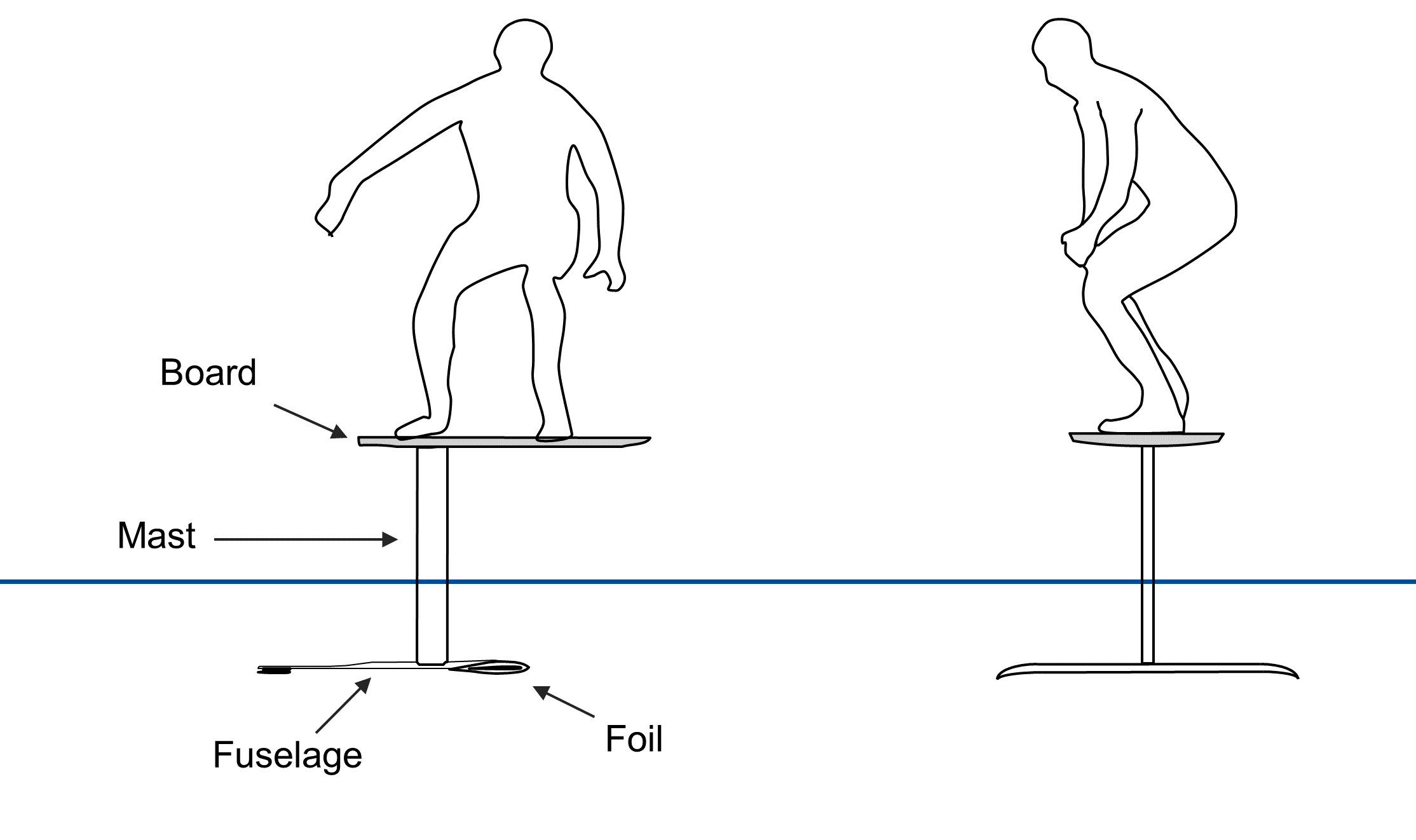
The mast length is then the distance between the fuselage and the board.
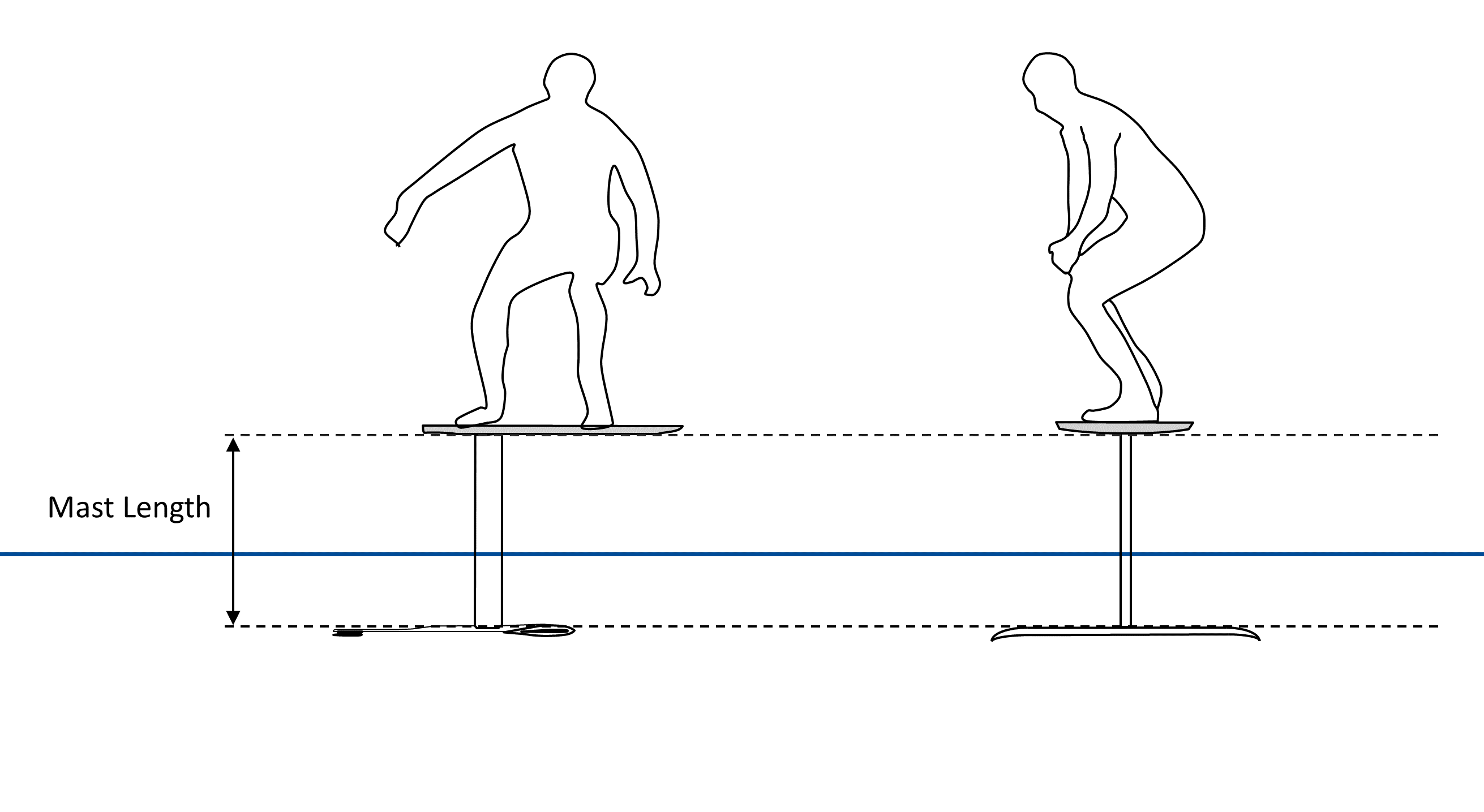
So you may ask, why the foil is not directly attached to the board. Well, first of all, the foil must be completely submerged into the water. Only with that, the water will flow around the foil and lift can be generated.
In addition to that, we also want to make sure that during the up-and-down pump movement, we do not touch the water with the board, which would result in friction and with that drag against the driving direction. In other words, the mast also ensures that there is enough space between the board and the foil which allows us to accelerate the board during the downward movement before touching the surface of the water.

Water conditions – choppy water
Another thing we also have to consider is that the water will not always be flat. In case you foil in choppy water, you have to ensure that you do not lift out the foil in the wave hollow out of the water. When the foil is not anymore submerged into the water, the lift will immediately be gone what will result the foil pitching and as a result of that, in most of the cases you will fall of your board.
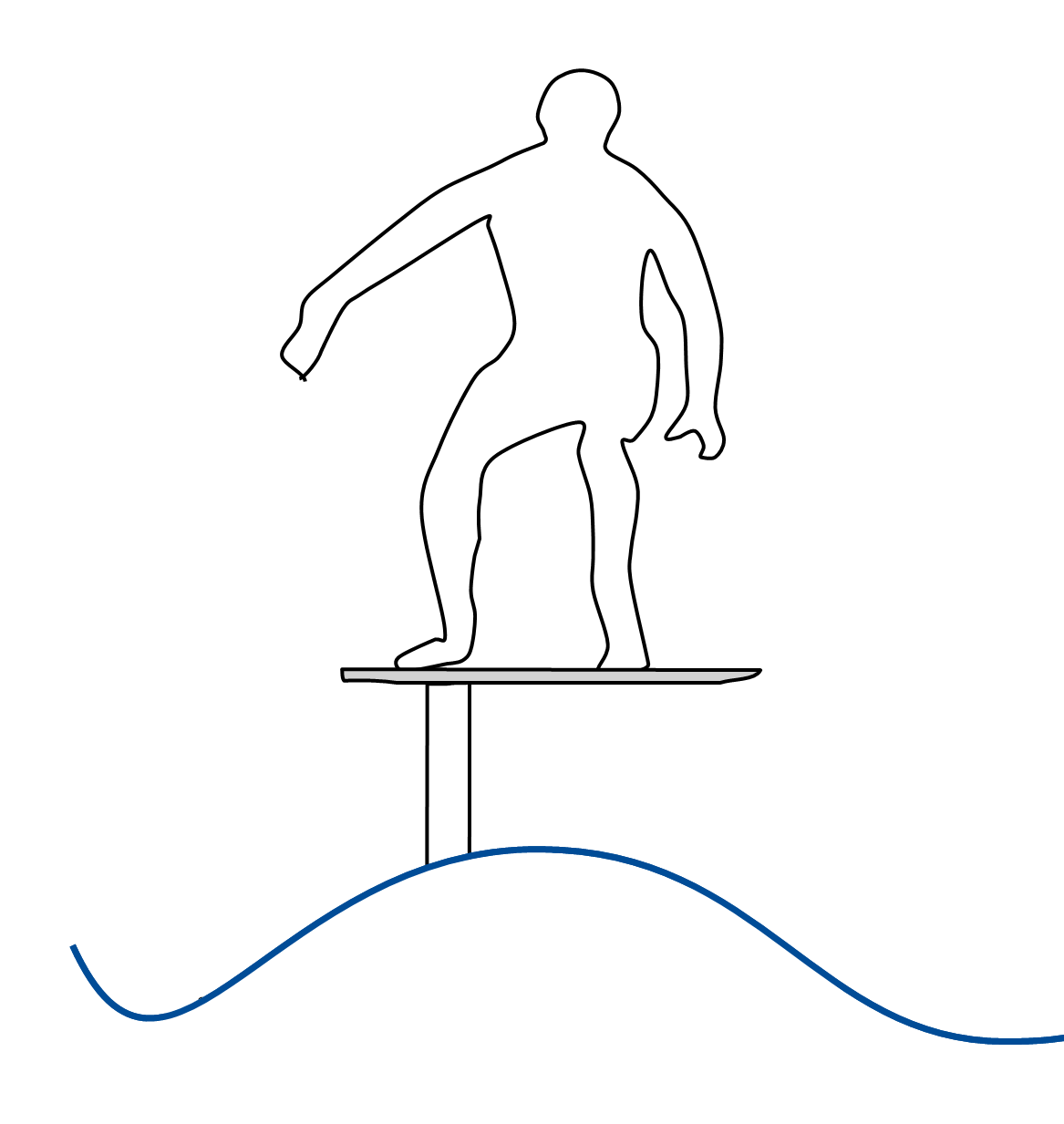
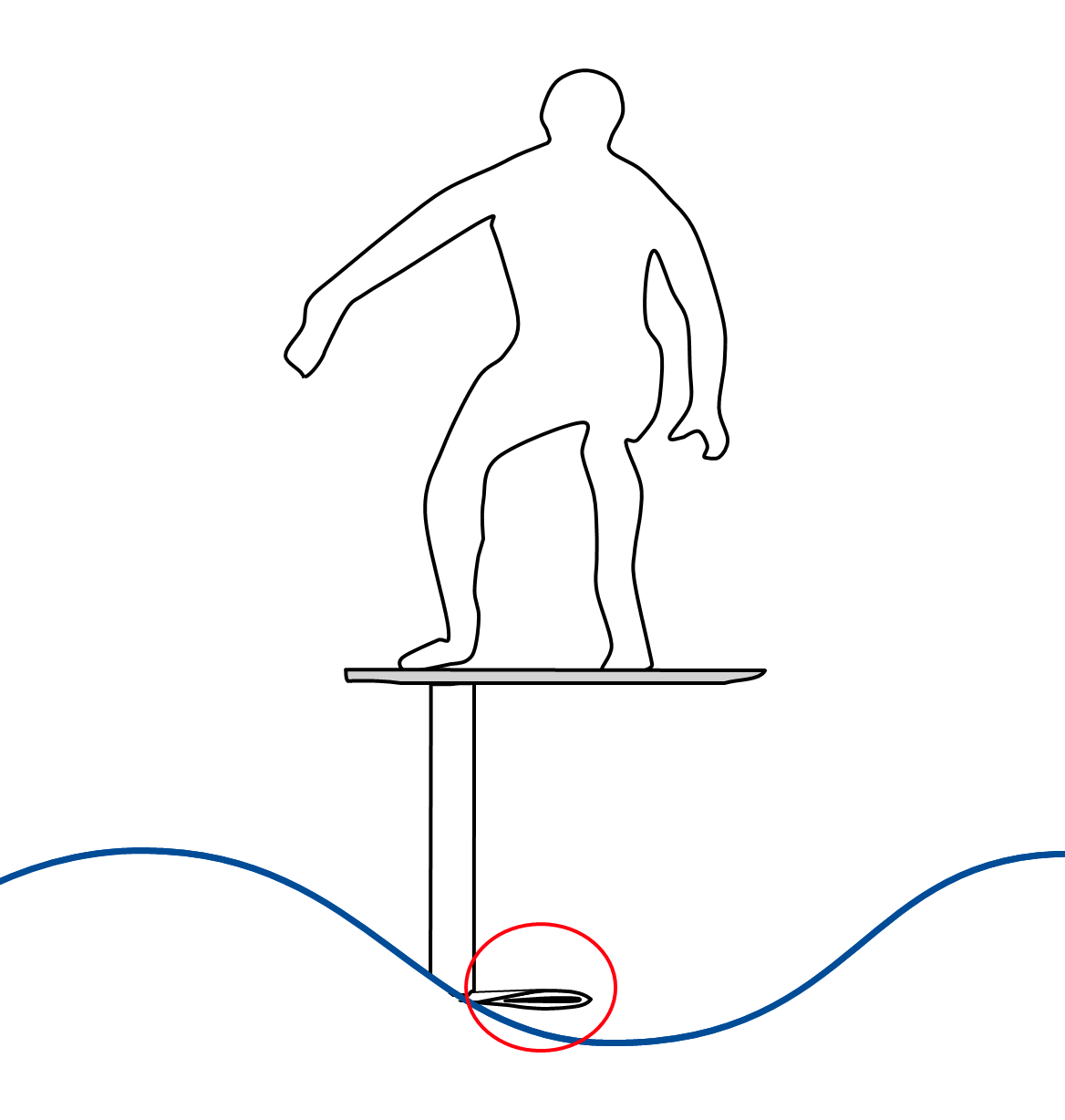
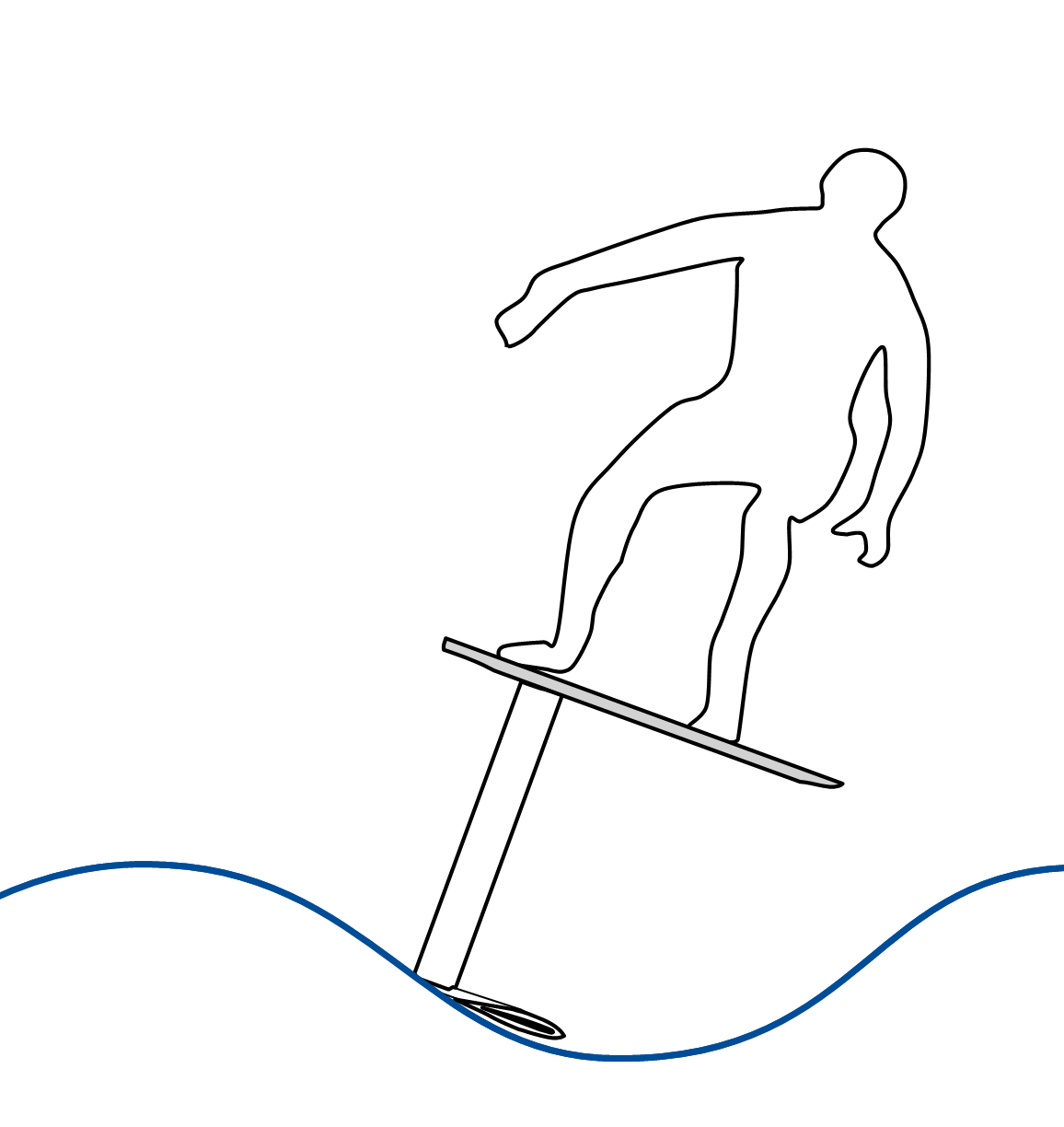
In choppy conditions, you can with a longer mast benefit from more a free area, respectively mast lengths, you can use for the pumping movement.
Another thing you should think about before buying a mast is, what you will be using it for. In case you for example will use the same mast not only for pumpfoiling, but also for wingfoiling, choosing a longer mast can make sense. As you usually will go wingfoiling when there is wind, the water will also be not flat but more choppy. Having a longer mast will reduce the risk that you lift out the foil of the water when passing the wave hollow.
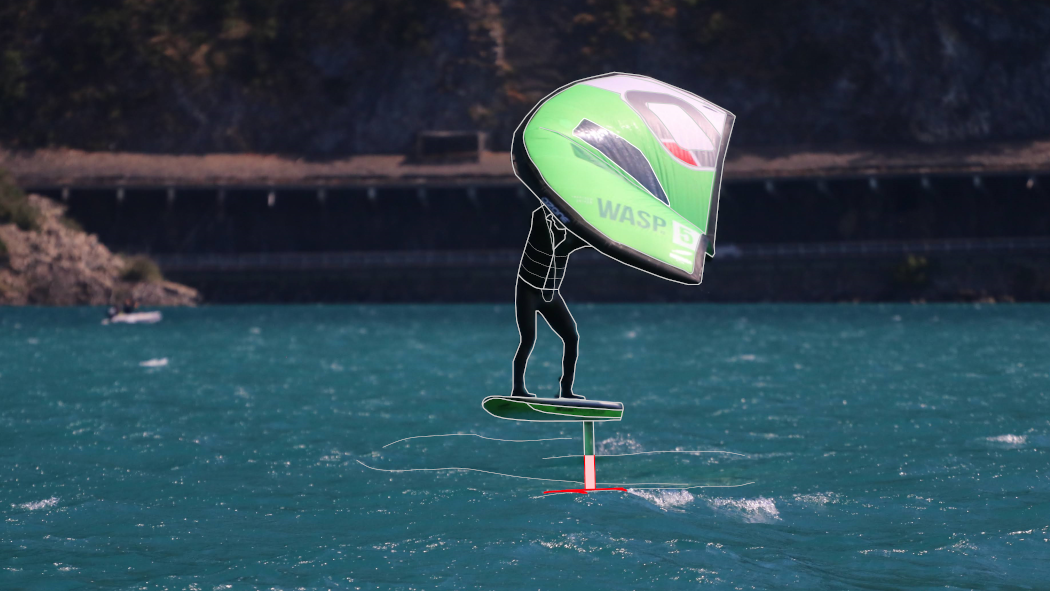
Where as the difference of a longer mast compared to a shorter mast and its impact on foiling in choppy conditions is quite easy to understand, there is another important aspect we should look at when comparing different mast length. Most of you will aks: Is there any difference in the foiling behaviour respectively, is it more or less difficult to do pumpfoiling with a longer or shorter mast?
Is pumpfoiling with a long mast more or less difficult than pumpfoiling with a short mast?
When pumpfoiling, you will move the board up and done, basically changing the pitch angle. Also, when do want to do a turn, you will change the pressure on the board to the left or right and induce a roll.
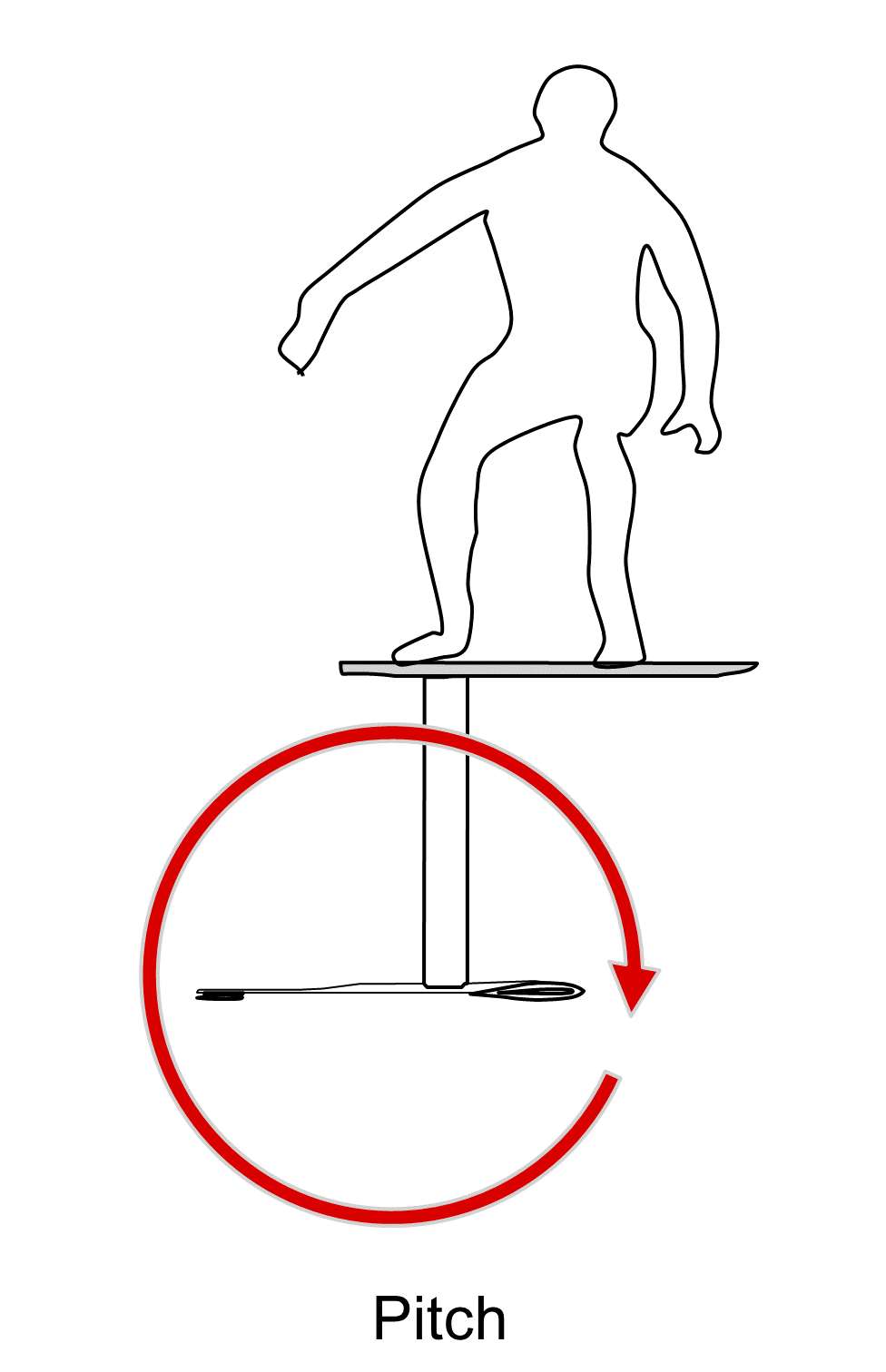

Let us first have a look at the change of the pitch angle. As mentioned, the pitch angle you will change when moving the board up and downwards in driving direction. Let us dig in a little bit more how the mast length comes here into play.
To understand the effects better, we need a quick recap on the forces and torsional moments acting while pumpfoiling. In the following picture, the force induced by the pumpfoiler is indicated with the purple arrow pointing downwards, the lift generated by the front wing is indicated with the red arrow pointing upwards and the downforce generated by the backwing is indicated by the grey arrow pointing downwards.
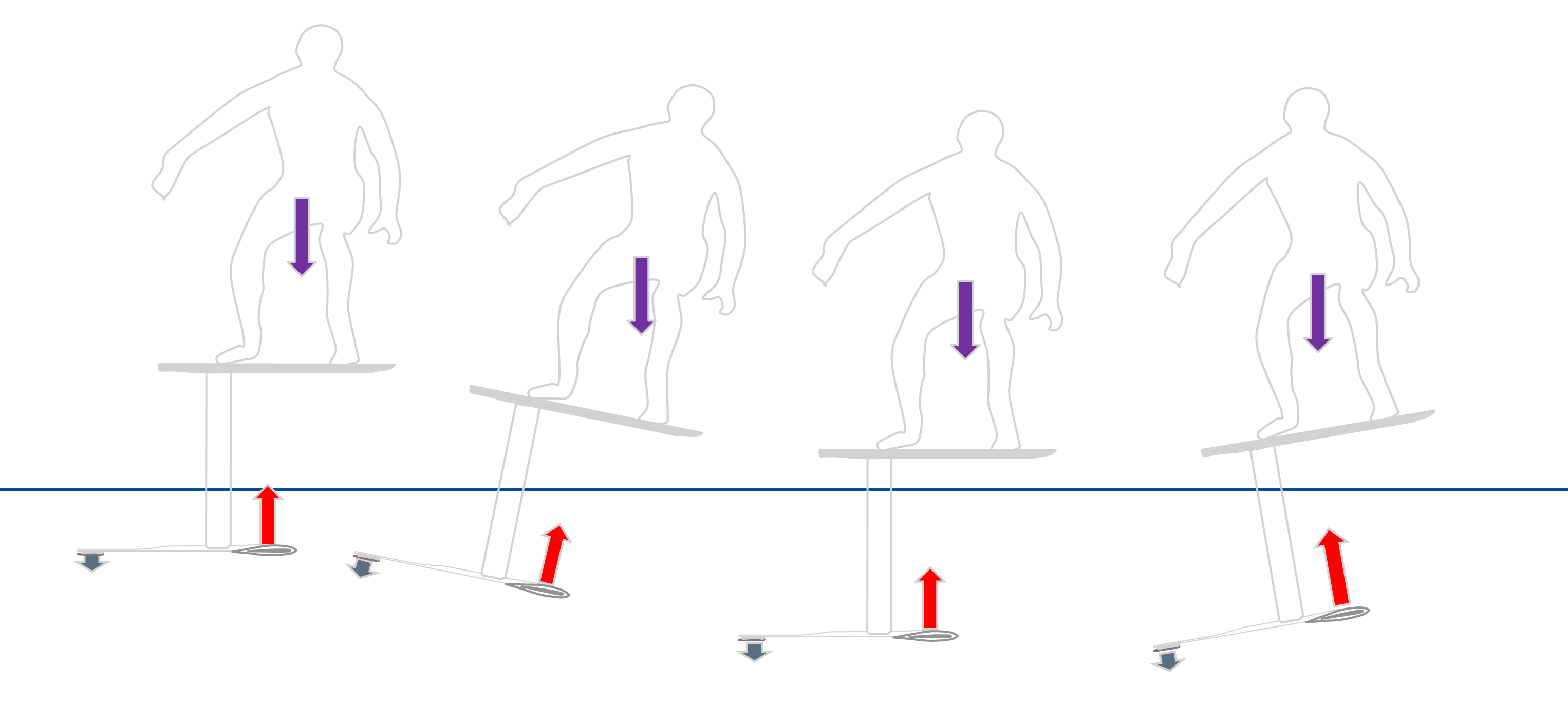
To accelerate, the foiler turns the board over the nose downwards. Shortly before the board touches the water, the foiler inclines the board upwards again. In my video “Body Position – Importance of keeping enough weight in the front area of your foil” I describe in more detail the effect of the torsional moments induced by the rider as well as the foils.
To calculate the torsional moment, we multiply the forces induced by the rider and wings with the distance from the point we want to know the resulting torsional moment. As the distance between the rotational center and the backwing as well as front wing is fix, we can conclude that the more we move the body to the front, the higher the resulting torsional moment will be.
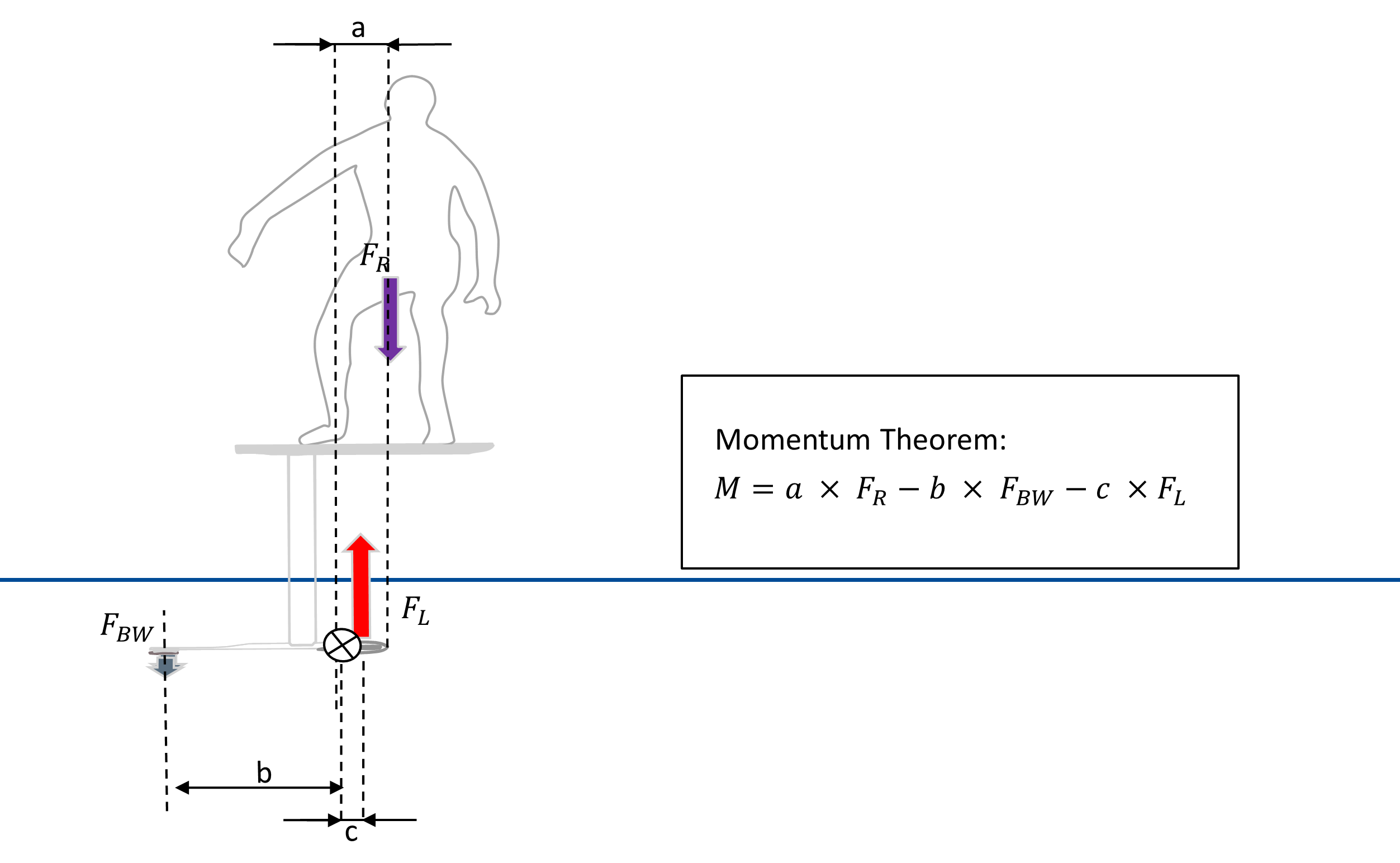
To show you how a longer compared to a shorter mast impacts the pumpfoiling, let us calculate the torsional moments for a 70cm and 90cm mast. Thereby, we assume that we have two identical setups and the only difference is the length of the mast. The question we want to answer is: How do the two systems compare, when we have the same position on the board and push the board down by the same tilt angle?
To calculate the torsional moment, we will have to do some trigonometric calculations. Those of you who are interested into the details, will find here the relevant calculations done here.
We know that the distance from the mast to the backwing and frontwing is in both systems the same. What we are interested in is the distance “z”. Thereby, we want to know how is the distance z changing with the tiliting angle when comparing the two different mast length.

The distance z can be calculated by the sum of the distance where the force of the rider is induced – in our example 20 cm in front of the rotational axis – and the distance „y“. Applying the trigonometric calculations, the distance z is calculated by the sum of 0.2 cm plus the mast length, multiplied by the tangens of the tilting angle α, and multiplying that product by the cosinus of the tilting angle α.
The resulting torsional moment is then the distance z – what we just calculated – multiplied by the force induced by the foiler.
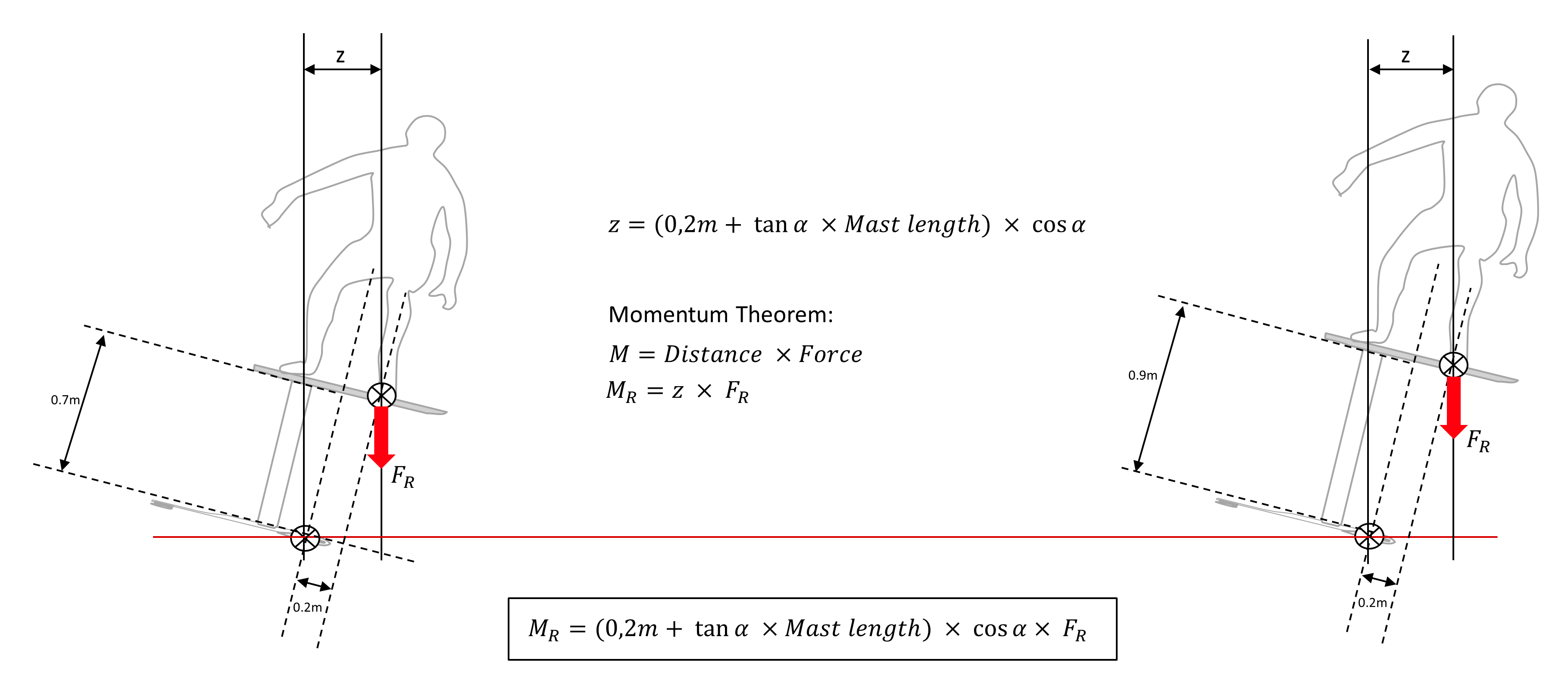
In the result we can see, that there is a non-linear correlation between the mast length and the resulting torsional moment when changing the tilting angle. This may sound very theoretical. But the good things is, you do not need to be in the position to calculate that to become a good foiler. Let me show you how we can interpret that result.
If you compare the dimension z and the torsional moment for the two different mast length and plot the result for different tilting angles you can see, that with a longer mast, the effect of the changing angle is much bigger. That leads to the feeling that a longer mast is less stable than a shorter one.

However, the feeling that it is less stable can also be interpreted, that with a longer mast, you gain for agility.
So as a conclusion we can state, that a longer mast is for less experienced foilers more difficult as it is less stable.
Height of the dock
The last what point I would like to mention here is the height of the dock. When you have the foil only slightly submerged in the water during the initial starting phase, the so called “usable height” for the pumpfoil movement is the biggest.

However, we have also to consider that the longer the mast the higher you will have to jump onto the board. So in case you generally start from higher docks, you will benefit from a longer mast. However, if you generally start from lower docks, the height will be limited by your jumping skills.

Summary – short or long mast for pumpfoiling
So let us summarize what you should consider when deciding about the length of the mast.
- A longer mast has the advantage that in wavy conditions, you can submerge the foil a little bit more into the water while still having enough height for the pumping movement. Thereby, the risk of lifting out the foil in the wave hollow is reduced.
- Especially when you think about using the same mast also for other foiling activities, a longer mast may be the better choice. E.g. when you want to use the same mast for Wingfoiling, a longer mast may the better choice.
- However, a longer mast will also be less stable. Due to the longer mast, the torsional moments induced also by smaller changes in the roll and pitch angle have a bigger impact which can be perceived as less stable.
- A longer mast may give you more pumpable height, however, when starting from lower docks, this effect cannot be extended unlimited as the maximum height will be limited by the jumping height.
I hope I could point out some points you should consider when deciding for the ideal mast length for your personal use. May some of you now also say, stop, you did not mention the weight of the mast. Yes, you are absolutely correct. I did not mention that. For sure, generally, a longer mast will be heavier than a shorter mast. However, we would then have to look in general into the aspect of material and this will be a separate topic to look at.

